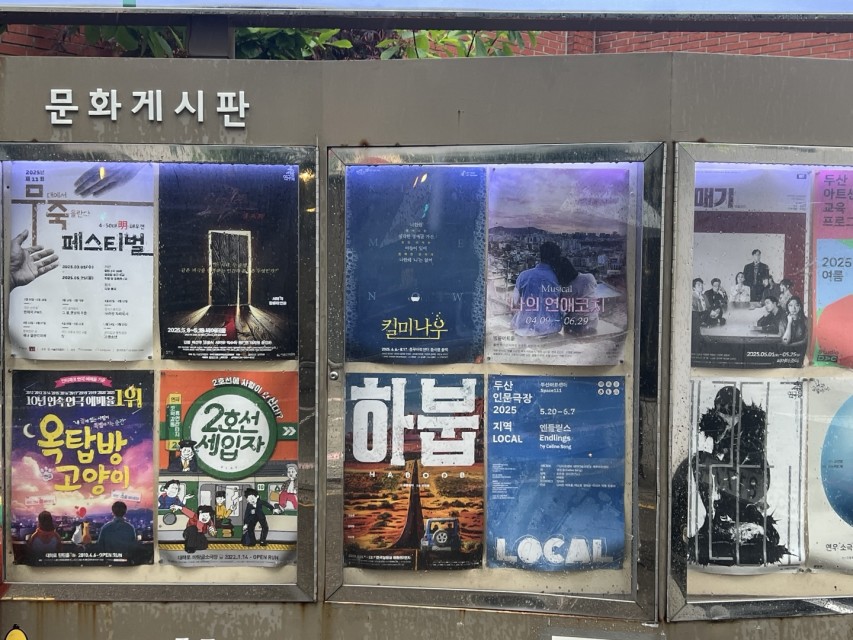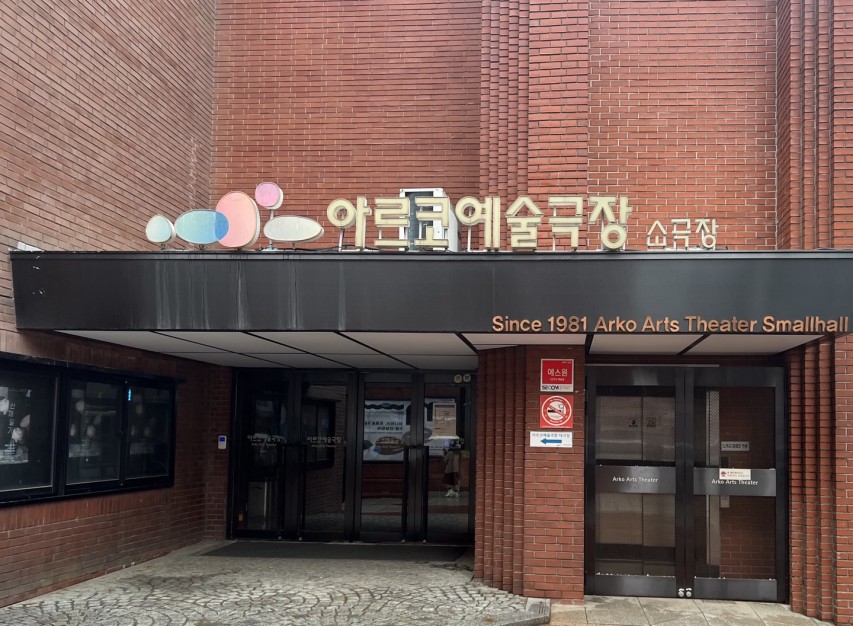[Culture] From Past to Present: Daehak-ro’s Journey to Becoming Seoul’s Heart of Art
"If you go to Hyehwa, you must watch a performance" is a common phrase among university students. The area refers to the surrounding Hyehwa Station, enclosed by Daehak-ro. Once a hub of education, this district has become a symbol of art, providing young people with numerous opportunities to participate in the arts sector.
The entrance of Arko Arts Theater
How Daehak-ro Became What It Is Today
Daehak-ro is an area that reflects the historical changes of Seoul. Stretching from Jongno 5-ga to Hyehwa Rotary in Seoul’s Jongno District, it encompasses several neighborhoods: Hyehwa-dong, Myeongnyun 4-ga, Dongsung-dong, and Ihwa-dong.
Daehak-ro has been closely linked to education since the Joseon Dynasty. In 1398, Sungkyunkwan—the highest educational institution of the era—was established in what is now the Myeongnyun-dong and Hyehwa-dong area. This district was named Sunggyo-bang, meaning a place that values teaching.
During the Japanese colonial period in the early 20th century, major educational institutions were established. For example, Keijo Imperial University (KIU)—the predecessor of today's Seoul National University (SNU)—was an educational institution founded in the area. Various other technical schools also began their educational journey near KIU.
In the late 1970s, the area was officially named Daehak-ro, meaning University Street, and began its transformation into a cultural district. After SNU moved its College of Liberal Arts and Sciences to a new campus, the old buildings were converted into cultural spaces, including Marronnier Park and the Arko Arts Theater. Following this, this introduction of a car-free street in 1985, the opening of Subway Line 4, and the growth of small theaters helped Daehak-ro become Seoul’s leading district for performing arts.

Posters of plays being performed in Daehak-ro
What Daehak-ro Looks Like Today
Today, Daehak-ro serves as Seoul's vibrant art center. According to government officials—the Seoul Metropolitan Government and the Seoul Foundation for Arts and Culture—the area hosted over 1,100 productions and more than 40,000 performances in 2024. Aligning with the various aviable shows, approximately 3.1 million tickets sold each year.
One reason for the popularity of Daehak-ro's performances is its unique theater landscape. The area features more than 150 small theaters, each with 100 to 300 seats. These intimate venues enable actors to interact closely with the audience, enhancing the immersion of the show.
The artistic center's reputation was built not only through its theaters but also through its other art facilities. Marronnier Park, a cultural space established on the former site of SNU's College of Law, is one of the primary facilities in Daehak-ro. The park features an outdoor stage and various cultural venues, making it a hub for street performances, arts festivals, and interactive events.
Building on its cultural roots, Daehak-ro has evolved into a hub where young creators to bring their ideas and creativity. The district’s abundance of small theaters, open plazas, and artist-friendly venues provides an ideal environment for pop-up exhibitions, participatory performances, and creative start-ups.
Recognizing this cultural energy, Seoul Metropolitan Government, Jongno District, and the Arts Council Korea actively support young artists. Their initiatives include the Youth Culture and Arts Pass, which offers 19-year-olds subsidies to attend performances and exhibitions. They also operate the Youth Arts Center, an open space for free creation, planning, and collaboration. In addition, the Seoul Foundation for Arts and Culture offers youth arts support programs that help emerging artists debut new works and explore fresh ideas.
Daehak-ro at a Crossroads: Sustaining Culture Amid Change
Despite Daehak-ro’s long history and artistic charm, it now faces new challenges. Small theaters and emerging performing groups are struggling to survive because of gentrification—a phenomenon of rising rents and living costs driven by an influx of new businesses and wealthier residents. In 2024, the average monthly rent for a small theater in the area has reached 4.5 million won, with prime locations exceeding 10 million won. According to the Seoul Foundation for Arts and Culture’s 2022 survey, many performance groups spend most of their revenue on rent and venue fees. This financial burden has made long-term production unstable and created a challenging environment for creative work.
To address these issues, the Seoul Metropolitan Government and Jongno District are expanding policies. These include revitalizing small theaters, supporting young artists, and creating spaces for new startups.
Since 2022, the Seoul Foundation for Arts and Culture has also provided additional support. Their initiatives include operational funding, creative program support, and the development of community cultural platforms through initiatives such as “Theater Neighborhood and Neighborhood Theater.”
Looking ahead, city planners are working to revise the Hyehwa–Myeongnyun district management plan by 2027 and to align it with Seoul’s 2040 urban master plan. It aims to enhance the sustainability of the cultural district. As local governments put considerable effort into sustaining Daehak-ro’s reputation, the collective work of the art sector and local community appears to be a key force in shaping the district’s future.
Daehak-ro was once a hub of education, but it has now grown into a center of culture and the arts. While the area faced challenges during the pandemic, like many other places, continued government support is expected to preserve its reputation. Visiting Daehak-ro can be beneficial not only for experiencing its historical and artistic value, but also for supporting the area in solidifying its vibrancy.
There are no registered comments.
I agree to the collection of personal information. [view]


